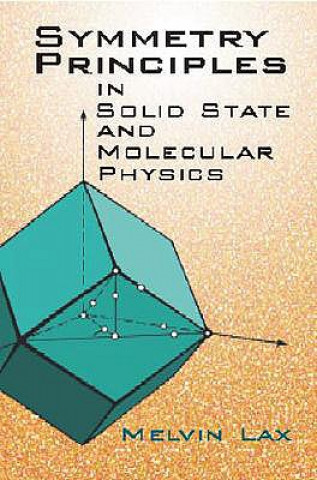
Kód: 02565717
Symmetry Principles in Solid State
Autor Lax
Chapter 1. Relation of Group Theory to Quantum mechanics 1.1 Symmetry Operations 1.2 Abstract Group Theory 1.3 Commuting Observables and Classes 1.4 Representations and Irreducible Representations 1.5 Relation between Re ... celý popis
- Jazyk:
 Angličtina
Angličtina - Vazba: Pevná
- Počet stran: 512
Nakladatelství: Dover Publications Inc., 2003
- Více informací o knize

Mohlo by se vám také líbit
-
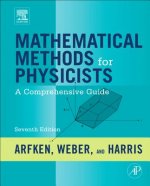
Mathematical Methods for Physicists
2823 Kč -

The Art of Princess Mononoke
758 Kč -

Billion Dollar Loser: The Epic Rise and Spectacular Fall of Adam Neumann and Wework
429 Kč -

Harry Potter Watercolor Magic: 32 Step-By-Step Enchanting Projects (Harry Potter Crafts, Gifts for Harry Potter Fans)
675 Kč -

Physics and Mathematics of Quantum Many-Body Systems
3611 Kč -

The Inspirational Leader
544 Kč -

Night of the Dragon
479 Kč -

Law Without Future
1487 Kč -

Harry Potter: Gryffindor
217 Kč -

Foundations for Architecting Data Solutions
1663 Kč -

Moominland Midwinter
344 Kč -

Mini Pusheen Coloring Book
170 Kč -

Something Wicked from Japan
543 Kč -

Inventory Control
3611 Kč -

Porsche Boxster Service Manual: 1997-2004
2636 Kč -

The Pearl
241 Kč -

Understanding Perspective (The Urban Sketching Handbook)
374 Kč -

Van Gogh
481 Kč -

Nazi Goreng
212 Kč -

Schritte Plus neu
556 Kč -

Heile dein inneres Kind
174 Kč
Dárkový poukaz: Radost zaručena
- Darujte poukaz v libovolné hodnotě a my se postaráme o zbytek.
- Poukaz se vztahuje na celou naši nabídku.
- Elektronický poukaz vytisknete z e-mailu a můžete ihned darovat.
- Platnost poukazu je 12 měsíců od data vystavení.
Více informací o knize Symmetry Principles in Solid State
Nákupem získáte 61 bodů
 Anotace knihy
Anotace knihy
Chapter 1. Relation of Group Theory to Quantum mechanics 1.1 Symmetry Operations 1.2 Abstract Group Theory 1.3 Commuting Observables and Classes 1.4 Representations and Irreducible Representations 1.5 Relation between Representations, Characters, and States 1.6 Continuous Groups 1.7 Summary Chapter 2. Point Groups 2.1 Generators of the Proper Rotation Group R superscript + (3) 2.2 The Commutator Algebra of R superscript + (3) 2.3 Irreducible Representations of R superscript + (3) 2.4 Characters of the Irreducible Representations of R superscript + (3) 2.5 The Three-dimensional Representation j=1 of R superscript + (3) 2.6 The Spin Representation j=1/2 of R superscript + (3) 2.7 Class Structure of Point Groups 2.8 The Proper Point Groups 2.9 Nature of Improper Rotations in a Finite Group 2.10 Relation between Improper and Proper Groups 2.11 Representations of Groups Containing the Inversion 2.12 Product Groups 2.13 Representations of an Outer Product Group 2.14 Enumeration of the Improper Point Groups 2.15 Crystallographic Point Groups 2.16 Double Point Groups 2.17 Summary Chapter 3. Point Group Examples 3.1 Electric and Magnetic Dipoles: Irreducible Components of a Reducible Space 3.2 Crystal field Theory without Spin: Compatibility Relations 3.3 Product Representations and Decomposition of Angular Momentum 3.4 Selection rules 3.5 Spin and Spin-Orbit Coupling 3.6 Crystal Field Theory with Spin 3.7 Projection Operators 3.8 Crystal Harmonics 3.9 Summary Chapter 4. Macroscopic Crystal Tensors 4.1 Macroscopic Point Group Symmetry 4.2 Tensors of the First Rank: Ferroelectrics and Ferromagnetics 4.3 Second-Rank Tensors: Conductivity, Susceptibility 4.4 Direct Inspection Methods for Tensors of Higher Rank: the Hall Effect 4.5 Method of Invariants 4.6 Measures of Infinitesimal and Finite Strain 4.7 The Elasticity Tensor for Group C subscript (3upsilon) 4.8 Summary Chapter 5. Molecular Vibrations 5.1 Representations contained in NH subscript 3 vibrations 5.2 Determination of the Symmetry Vectors for NH subscript 3 5.3 Symmetry Coordinates, Normal Coordinates, Internal Coordinates, and Invariants 5.4 Potential Energy and Force Constants 5.5 The Number of Force Constants 5.6 Summary Chapter 6. Translational Properties of Crystals 6.1 Crystal Systems, Bravais Lattices, and Crystal Classes 6.2 Representations of the Translation Group 6.3 Reciprocal Lattices and Brillouin Zones 6.4 Character Orthonormality Theorems 6.5 Conservation of Crystal Momentum 6.6 Laue-Bragg X-ray Diffraction 6.7 Summary Chapter 7. Electronic Energy Bands 7.1 Relation between the Many-Electron and One-Electron Viewpoints 7.2 Concept of an Energy Band 7.3 The Empty Lattice 7.4 Almost-Free Electrons 7.5 Energy Gaps and Symmetry Considerations 7.6 Points of Zero Slope 7.7 Periodicity in Reciprocal Space 7.8 The k • p Method of Analytical Continuation 7.9 Dynamics of Electron Motion in Crystals 7.10 Effective Hamiltonians and Donor States 7.11 Summary Chapter 8. Space Groups 8.1 Screw Axes and Glide Planes 8.2 Restrictions on space Group Elements 8.3 Equivalence of Space Groups 8.4 Construction of Space Groups 8.5 Factor Groups of Space Groups 8.6 Groups G subscript k of the Wave Vector k 8.7 Space Group Algebra 8.8 Representations of Symmorphic Space Groups 8.9 Representations of Nonsymmorphic Space Groups 8.10 Class Structure and Algebraic Treatment of Multiplier Groups 8.11 Double Space Groups 8.12 Summary Chapter 9. Space Group Examples 9.1 Vanishing Electric Moment in Diamond 9.2 Induced Quadrupole Moments in Diamond 9.3 Force Constants in Crystals 9.4 Local Electric Moments 9.5 Symmetries of Acoustic and Optical Modes of Vibration 9.6 Hole Scattering by Phonons 9.7 Selection Rules for Direct Optical Absorption 9.8 Summary Chapter 10. Time reversal 10.1 Nature of Time-Reversal Operators without Spin 10.2 Time Reversal with Spin 10.3 Time Reversal in External Fields 10.4 Antilinear and Antiunitary Operators 10.5 Onsager Relations 10.6 The Time-Reversed Representation 10.7 Time-reversal Degeneracies 10.8 The Herring Criterion for Space Groups 10.9 Selection Rules Due to Time Reversal 10.10 Summary Chapter 11. Lattice Vibration Spectra 11.1 Inelastic Neutron Scattering 11.2 Transformation to Normal Coordinates 11.3 Quantized Lattice Oscillators: Phonons 11.4 Crystal Momentum 11.5 Infinitesimal Displacement and Rotational Invariance 11.6 Symmetry Properties of the Dynamical Matrix 11.7 Consequences of Time Reversal 11.8 Form and Number of Independent Constants in the Dynamical Matrix for Internal and Zone Boundary Points 11.9 The Method of Long Waves: Primitive Lattices 11.10 Nonprimitive Lattices and Internal Shifts 11.11 Summary Chapter 12. Vibrations of Lattices with the Diamond Structure 12.1 Force Constants and the Dynamical Matrix 12.2 Symmetry of Vibrations at DELTA = (q, 0, 0) 12.3 R(q) and omega(q) for q = (q, 0, 0) 12.4 Sigma Sum Modes (q, q, 0) 12.5 The Modes LAMBDA = (q, q, q) and L = (2 pi/a)(1/2, 1/2, 1/2) 12.6 Elastic Properties of the Diamond Structure 12.7 Comparison with Experiment 12.8 Summary Chapter 13. Symmetry of Molecular Wave Functions 13.1 Molecular Orbital Theory 13.2 Valence Bond Orbitals 13.3 Many-Body Wave functions and Chemical Structures 13.4 Hartree-Fock Wave Functions and Broken Symmetry 13.5 The Jahn-Teller Effect 13.6 Summary Appendix A. Character Tables and Basis Functions for the Single and Double Point Groups Appendix B. Schoenflies, International, and Herring Notations Appendix C. Decomposition of D subscript J superscript plus/minus of Full Rotation Group into Point Group Representations Appendix D. Orthogonality Properties of Eigenvectors of the Equation alpha PSI = lambda B PSI; Reciprocals of Singular Matrices Appendix E. The Brillouin Zones Appendix F. Multiplier Representations for the Point Groups Appendix G. Wigner Mappings and the Fundamental Theorem of Projective Geometry Appendix H. Generalized Mobility Theory Author Index and Bibliography; Subject Index; Symbol Index
 Parametry knihy
Parametry knihy
Zařazení knihy Knihy v angličtině Mathematics & science Physics
612 Kč
- Plný název: Symmetry Principles in Solid State
- Autor: Lax
- Jazyk:
 Angličtina
Angličtina - Vazba: Pevná
- Počet stran: 512
- EAN: 9780486420011
- ISBN: 0486420019
- ID: 02565717
- Nakladatelství: Dover Publications Inc.
- Hmotnost: 742 g
- Rozměry: 236 × 158 × 40 mm
- Datum vydání: 28. March 2003
Oblíbené z jiného soudku
-

Six Easy Pieces
379 Kč -

Schaum's Outline of College Physics, Twelfth Edition
437 Kč -

Schaum's Outline of Beginning Physics I: Mechanics and Heat
754 Kč -

Direction of Time
410 Kč -

Big Picture
399 Kč -

Basic Physics - A Self-Teaching Guide, Third Edition
538 Kč -

The Feynman Lectures on Physics Set
4515 Kč -

Feynman Lectures on Physics, Vol. I
1016 Kč -

University Physics with Modern Physics, Global Edition
2297 Kč -

Inventions, Researches, and Writings of Nikola Tesla
330 Kč -

Feynman Lectures on Physics, Vol. III
918 Kč -

Physics: Principles with Applications, Global Edition
2544 Kč -

Brief History of Time
399 Kč -

Advanced Physics For You
1914 Kč -

Principia
416 Kč -

PHYSICS OF THE IMPOSSIBLE: A SCIENTIFIC
352 Kč -
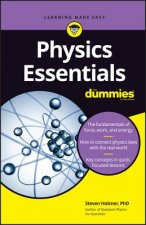
Physics Essentials For Dummies
217 Kč -

Big Picture
607 Kč -
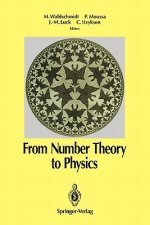
From Number Theory to Physics
5094 Kč -

Schaum's Outline of Modern Physics
637 Kč -

String Theory
5223 Kč -

Supersymmetry and Supergravity
2964 Kč -
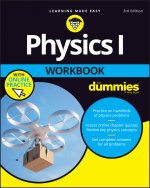
Physics I Workbook For Dummies with Online Practice
574 Kč -

String Theory and M-Theory
4151 Kč -

Schaum's Outline of Physics for Engineering and Science, Fourth Edition
510 Kč -

Schaum's Outline of Beginning Physics II: Electricity and Magnetism, Optics, Modern Physics
989 Kč -

Symmetries in Particle Physics
1681 Kč -

Six Not-So-Easy Pieces
379 Kč -

The Theoretical Minimum
390 Kč -

Physics for the IB Diploma Coursebook
1559 Kč -
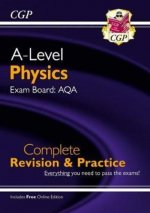
A-Level Physics: AQA Year 1 & 2 Complete Revision & Practice with Online Edition
778 Kč -

Physics for Scientists and Engineers with Modern Physics
2827 Kč -
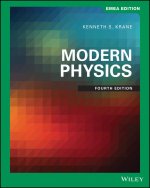
Modern Physics, Fourth EMEA Edition
1733 Kč -

Feynman Lectures on Physics, Vol. II
1126 Kč -

Philosophiae Naturalis Principia Mathematica (Latin,1687)
547 Kč -

God Particle
542 Kč -

Tao of Physics
478 Kč -

Beautiful Question
358 Kč -
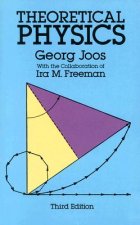
Theoretical Physics
948 Kč -

Energy
505 Kč -
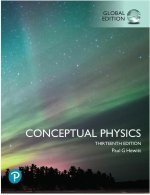
Conceptual Physics, Global Edition
2129 Kč -

Schaum's 3,000 Solved Problems in Physics
679 Kč -

Mathematical Methods in Physics and Engineering
492 Kč -

Regular Polytopes
369 Kč -

Seven Brief Lessons on Physics
352 Kč -
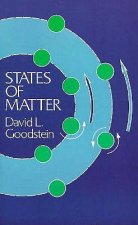
States of Matter
603 Kč -
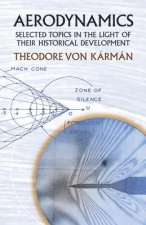
Aerodynamics
368 Kč -

Speakable and Unspeakable in Quantum Mechanics
1930 Kč -

Fundamentals of Physics Extended
4510 Kč
Osobní odběr Praha, Brno a 12903 dalších
Copyright ©2008-24 nejlevnejsi-knihy.cz Všechna práva vyhrazenaSoukromíCookies



 Vrácení do měsíce
Vrácení do měsíce 571 999 099 (8-15.30h)
571 999 099 (8-15.30h)